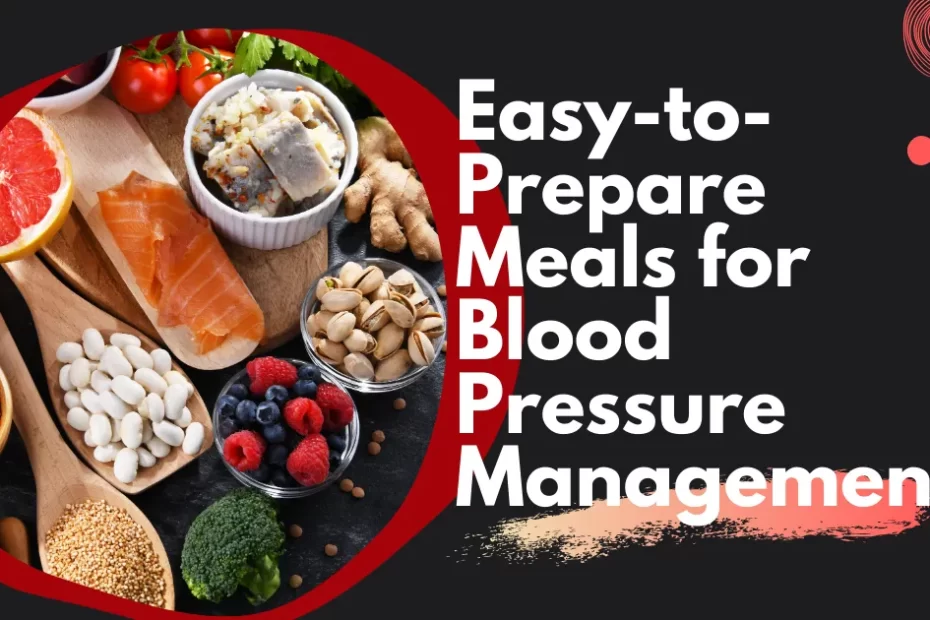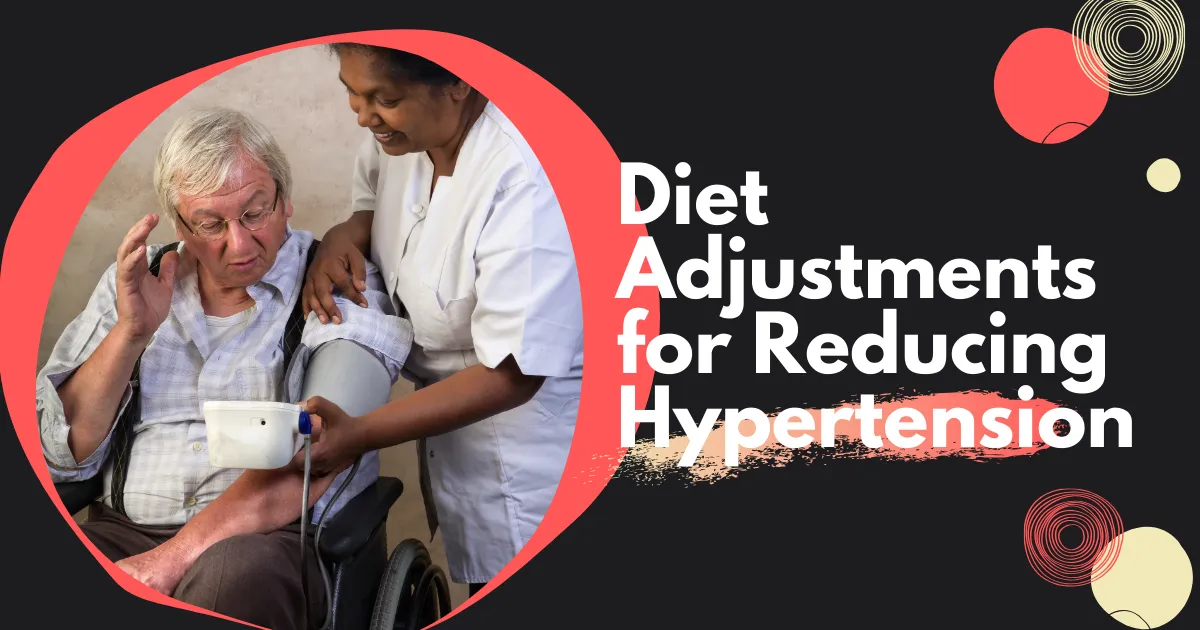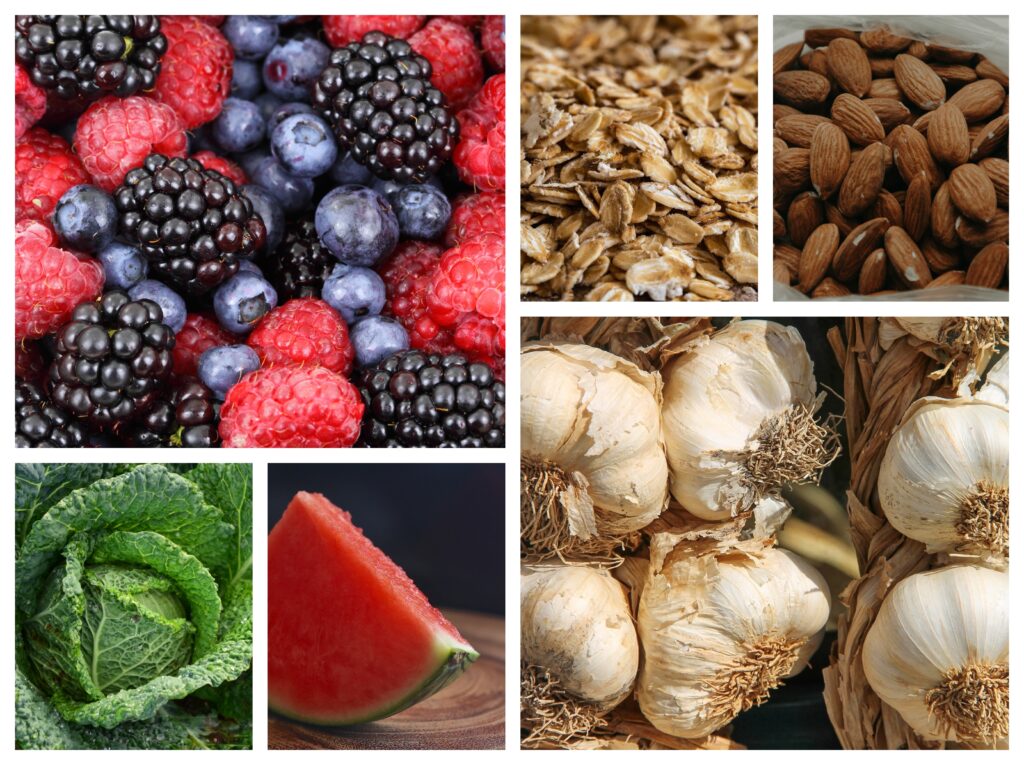Are you looking to improve your heart health and lower your blood pressure naturally? The good news is that the foods you eat can play a significant role in achieving these goals (naturally lower blood pressure).
Eat Your Way to a Healthier Heart: Foods That Lower Blood Pressure
By incorporating heart-healthy foods into your diet, you can take control of your cardiovascular health and reduce your risk of heart disease.
This article will examine the top foods proven to lower blood pressure and support a healthy heart. From fruits and vegetables to whole grains and lean proteins, there are plenty of delicious options that can help support your cardiovascular health. By making simple dietary adjustments, you can nourish your heart and enhance your overall well-being.
So, if you’re ready to take the first step towards better heart health, keep reading to discover the best foods to incorporate into your diet for lower blood pressure and a healthier heart. You’ll be amazed at the positive impact that these nutritious foods can have on your cardiovascular system.
More food rich in fiber to lower blood pressure. What is the best drink to lower blood pressure, its benefits and ingredients, and how?
Do you know the DASH Diet? DASH stands for Dietary Approaches to Stop Hypertension, or foods that lower blood pressure.
Beat Hypertension with These Delicious Superfoods – Foods That Lower Blood Pressure
Changing one’s diet can significantly reduce high blood pressure. Research has shown that certain foods can lower blood pressure, both immediately and in the long term.
The goal of treatments for high blood pressure is to lower blood pressure and protect vital organs, like the brain, heart, and kidneys, from damage through foods that lower blood pressure.
If your blood pressure is elevated and you want to see an immediate change, lie down and take deep breaths. The stress-relieving technique helps to bring down blood pressure.
Foods to Fight Hypertension: What to Eat to Reduce Your Risk
Garlic
Garlic is a natural antibiotic food and is highly effective in treating hypertension or high BP.
According to researchers in a study published in Nutrition, garlic contains a chemical called allicin. It is an active ingredient associated with garlic’s blood pressure-lowering effects, especially in those with high BP or hypertension.
Some experiments also recommended that garlic increases the body’s production of nitric oxide, which causes the smooth muscles to loosen and the blood vessels to dilate.
Therefore, people with high BP should include garlic in their daily diet.
Watermelon
Watermelons are loaded with citrulline and lycopene. These two potent plant compounds are essential in managing high blood pressure in the body.
- Citrulline is essential for the production of the gas nitric oxide.
- When nitric oxide is produced, it helps expand blood vessels, which improves blood flow and prevents an abnormal spike in blood pressure levels.
- Other vitamins and minerals in watermelon are also good for your heart health.
- A study has revealed that eating watermelon is good for heart health and can reduce the risk of nerve troubles in cold cases.
Almonds
Almonds contain many healthy fats, fiber, protein, magnesium, and vitamin E. The health benefits of almonds include lower blood sugar levels, reduced blood pressure, and lower cholesterol levels.
They can also reduce hunger and promote weight loss. The research found that they significantly increase the number of antioxidants in the bloodstream, lower blood pressure, and improve blood flow.
Oatmeal
Oatmeal, high-pitched in fiber, can help your body maintain a healthful BP and cholesterol position. 100 grams of fortified oats has 10 grams of fiber, 352—milligrams of calcium, and 359 grams of potassium.
In some studies, both calcium and potassium have helped abate BP. In research studies of kinfolks with high blood pressure, gobbling fiber, rich wholegrain oats every day called a significant dip in blood pressure.
Berries
Bioactive compounds in blueberries called anthocyanins open protection against hypertension compared with those who do not eat blueberries.
Blueberries may not only help control high blood pressure but also prevent people from developing hypertension.
Blueberries contain one of the highest antioxidant levels among consumed fruits and vegetables.
Cranberry Juice Benefits: Cranberries are packed with nutrients to help your body ward off infections and boost overall health. In fact, throughout history, they’ve been used to treat urinary issues, upset stomach, and liver problems.
Banana
Bananas are a perfect root of potassium fiber and are low-toned in sodium.
Several studies show that potassium and fiber status abbreviated blood pressure, heart disease, and stroke risk.
Eating potassium-rich meat increases the push on kidneys and helps eliminate excess sodium by positioning added sodium out of her body through urine.
Calorie of Banana: Bananas are high in fiber but low in calories
One medium banana provides around 7% of your recommended daily intake, with just 105 calories.
Leafy Greens
Leafy green vegetables, like spinach and kale, are low in calories, high in fiber, and jam-packed with heart-healthy nutrients like potassium, folate, and magnesium.
These veggies are also rich in natural nitrates, which help to manage blood pressure.
- Potassium, rich food, cures the body and makes it more efficient at flushing out a plethora of sodium, which can cause BP.
- Magnesium enables our insignificant blood vessels to unwind, helping to maintain elasticity and normal blood movement.
Beetroots
Beetroots are a low-calorie food jam-packed with a variety of nutrients.
Drinking one glass of beetroot liquor tail is enough to reduce blood pressure in people with hypertension at parties significantly.
The combination that originates from beetroot, a healthy veggie for blood pressure, is nitric oxide.
It is a powerful chemical that affects the blood vessels in your legs, improving blood flow to your organs, muscles, and, more importantly, your brain.
Darkness chocolate
Dark and light chocolate contains more than 60 % cocoa solids and has less sugar than regular chocolate.
- Chocolate is high in flavonoids, notably a subtype announced flavonoids associated with a lower threat of myocardial infarction.
- A brand-new Harvard study finds that eating a smaller spoon of dark chocolate daily can help lower blood pressure in people with hypertension.
Milk and Yogurt
Milk and yogurt are excellent sources of calcium, potassium, and magnesium.
- Together, these nutrients help lower blood pressure. Milk and yogurt were found to be associated with a minor increase in systolic BP.
- In a study presented at the American Heart Association, those who ate five or more servings of yogurt a week experienced a 20% reduction in their risk of developing high blood pressure.
Pomegranate Juice
The benefits of pomegranate juice include its antioxidant properties, which may help prevent cancer and other conditions, providing vitamin C, promoting digestive health, and reducing insulin resistance. It may help with cancer prevention, immune support, and fertility.
Vegetable Juice
Vegetable Juice: Juicing can help reduce your risk of cancer, boost your immune system, remove toxins from your body, aid digestion, and support weight loss. However, there’s no scientific evidence that extracted juices are healthier than juice from eating fruit or vegetables.
Kiwi and Grapes
They are rich in lutein, a potent antioxidant, which may be responsible for their blood pressure.
Oslo University Hospital’s research in Norway shows that eating three kiwis daily is linked to decreased BP.
The investigation compared the effects of apples and kiwis on individuals with slightly elevated blood pressure.
New research from Queen’s University Belfast suggests drinking a few glasses of red wine a week could be the key to reducing blood pressure.
Watermelon Colors & Characteristics
| Color | Appearance | Flavor Profile | Nutritional Highlights |
|---|---|---|---|
| Red | Bright red flesh, black seeds (or seedless) | Classic sweet, juicy flavor | Rich in lycopene (antioxidant), vitamin C |
| Watermelon Yellow | Golden-yellow interior | Sweet with honey-like notes | High in beta-carotene (vitamin A precursor) |
| Orange | Deep orange to peach-colored flesh | Tropical, cantaloupe-like sweetness | Contains lycopene & beta-carotene |
| White | Very pale or translucent flesh | Mild and less sweet | Low in pigments, minimal antioxidants |
| Watermelon Pink | Soft red to blush pink flesh | Mildly sweet and juicy | Hydrating, contains some lycopene |
Foods That Lower Blood Pressure: A DASH-Friendly Approach
Managing high blood pressure doesn’t have to rely solely on medication. Incorporating foods that lower blood pressure into your daily diet can make a significant difference—and the DASH diet (Dietary Approaches to Stop Hypertension) offers a proven roadmap.
The DASH plan emphasizes whole, nutrient-dense foods rich in potassium, magnesium, calcium, and fiber while limiting sodium and saturated fats. One of the most effective foods that lowers blood pressure is leafy greens like spinach, kale, and Swiss chard, which are high in potassium—a key mineral that helps balance sodium levels in the body.
Berries, especially blueberries and strawberries, are another DASH-approved powerhouse. Packed with antioxidants called anthocyanins, they help relax blood vessels and reduce inflammation. Whole grains, such as oats and brown rice, as well as legumes like lentils and chickpeas, provide fiber and protein, which support heart health.
Low-fat dairy products are also central to the DASH diet, offering calcium to strengthen blood vessels. Adding nuts, seeds, and fatty fish like salmon provides omega-3s, which are known to naturally lower blood pressure.
Limiting processed foods, sugary drinks, and red meats is equally essential. Replacing them with foods that lower blood pressure can lead to long-term improvements in cardiovascular health.
Incorporating these DASH-aligned choices into your routine isn’t just heart-smart—it’s sustainable and delicious.
Share this:
- Click to share on Facebook (Opens in new window) Facebook
- Click to share on Pinterest (Opens in new window) Pinterest
- Click to share on LinkedIn (Opens in new window) LinkedIn
- Click to share on X (Opens in new window) X
- Click to share on Tumblr (Opens in new window) Tumblr
- Click to share on Bluesky (Opens in new window) Bluesky


